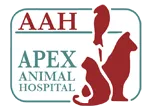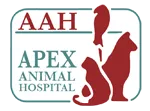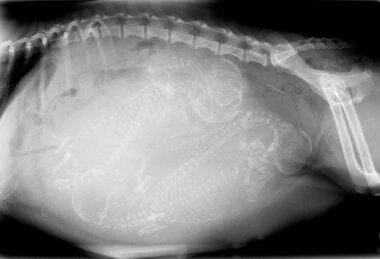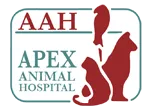How to breed:
Are you ready to breed your dog then you must be prepared to know?
1. Right age and health of your Dam: We recommend to breed after 2 years of age
2. Get eye test CERF exam done by veterinary Ophthalmologist
3. Get OFA certification for hips and elbow at 24 months
4. Heart and thyroid check
5. Brucella canis test 1 month before breeding
6. Complete physical exam by veterinarian to check any vaginal bands or strictures
Time to breed
When dog starts bleeding from vulva and vulva is swollen it is start of estrus. Monitor when the discharge is not blood tinged but pinkish. Mostly it happens in 7-10 days of first sign of bleeding. Check progesterone levels at your veterinarian. He will estimate the time of ovulation and time for breeding. It can be natural or artificial insemination depending upon your choice.
Prenatal Care
Preparing for your dog's labor and puppy care can be both exciting and fun; still, awareness of potential problems is of paramount importance. It is a good idea to keep track of your dog's breeding date so as to know when to expect what.
Diet for Mother:
During pregnancy, mother requires more calories and healthy food. She will need 2 times more food during pregnancy and 3 times more food during nursing. Puppy development food is best source of all the required nutrients for mother. Don’t supplement Calcium and Vitamins. Restrict exercise in last 2 weeks of pregnancy
Check the status of pregnancy:
Ultra sound at 28 days is recommended to check the pregnancy. Ultrasound does not tell exact number but can estimate. You can see heart beats of puppies to ensure they are alive X Ray examination is recommended at 45 days when skeletons of puppies are mineralized to be seen on X- Rays. You can count the numbers of puppies on X rays. It will help when at time of whelping that all the puppies are out This is important as you will need to know when her labor is finished so you can be sure none of the puppies have been retained.
A comfortable area should be set aside for whelping (giving birth) and raising the puppies. The mother should feel at home here and should be able to come and go as she likes while the puppies must remain confined. The dog's gestation period is considered to be 63 days though this is can be 58-68 days. Start taking rectal temperature , when it drops 1 degree than normal ,she is going in labor within 24 hrs.
The First Stage of Labor
During this stage, uterine contractions begin. The mother will appear restless and may pace, dig, shiver, pant, or even vomit. This is all normal and all an owner can do is see that she has water available should she want it. This stage of labor is long, lasting 6 to 12 hours and culminates with full dilation of the cervix in preparation to expel a puppy.
The Second and Third Stages of Labor
Puppies are born covered in membranes that must be cleaned away or the pup will suffocate. The mother will bite and lick the membranes away. Allow her a minute or two after birth to do this; if she does not do it, then you must clean the pup for her. Simply remove the slippery covering and rub the puppy with a clean towel. The umbilical cord may be tied in a knot about one inch from the pup and cut with scissors on the far side of the knot. Be careful not to pull on the umbilical cord as this can injure the puppy. The mother may want to eat the placenta but this is probably not a good idea as vomiting it up later is common; it is best to clean away the placenta yourself.
Expect one pup every 45 to 60 minutes with 10-30 minutes of hard straining. It is normal for the mother to take a rest partway through delivery and she may not strain at all for up to four hours between pups. If she is seen straining hard for over 30 minutes or if she takes longer than a 4-hour break, consult a veterinarian. This is where it is important to know whether she has delivered the entire litter that was counted on the X-ray. Expect some puppies (probably half of them) to be born tail first, which is normal for dogs.
Most of the time nature handles things according to plan and there are no complications. The important thing is to be prepared and know what constitutes a deviation from normal. During the delivery, a puppy can get stuck either because of size or positioning, the mom can get too tired or dehydrated to complete the mission without help, or any number of unexpected problems can arise. Problems can happen during the actual delivery or in the days following.
Call your veterinarian if:
- 30 to 60 minutes of strong contractions occur with no puppy being produced.
- More than 4 hours pass between pups and you know there are more inside.
- She fails to go into labor within 24 hours of her temperature drop.
- She is obviously in extreme pain
- Greater than 70 days of gestation have passed.
It is normal for the mother to spike a fever in the 24 to 48 hours following birth. This fever should not be accompanied by clinical signs of illness. Normal vaginal discharge after giving birth should be odorless and may be green, dark red-brown or bloody and may persist in small amounts for up to 8 weeks. Green discharge is a bit special as this is the discharge indicating separation of a placenta from the uterus. During birth of a litter, many placentas are separating so there will be plenty of green discharge. Where this becomes important is on the very first puppy as when the first placenta separates, its’ associated puppy will need oxygen very soon so a live puppy should appear within 30 minutes of seeing green discharge. If not, there is a problem and you should consult a veterinarian.
Problems to Watch for in the Following Days
Metritis:
Fever, foul-smelling vaginal discharge, listlessness, loss of appetite, no interest in the puppies, decreased milk production. If these signs are noted, usually in the first day or two postpartum, a veterinarian should be consulted. Your dog may have retained a placenta or have suffered some trauma during delivery. Animals who require assistance with delivery are often predisposed to metritis. She will likely need to be spayed.
Eclampsia:
This condition results when the mother has trouble supporting the calcium demand of lactation; it's a particular concern for toy breed dogs. Calcium supplementation predisposes a mother to this condition. Usually affected animals are small dogs.
They demonstrate: They can show signs of nervousness and restlessness, muscle spasm, stiffness and seizures. Call veterinarian ASAP
Mastitis (Inflammation of the Breasts)
Normal nursing glands are soft and enlarged. Diseased glands are red, hard, and painful. In general, the mother does not act sick; the disease is confined to the mammary tissue. The mother may be sore and discourage the pups from nursing; however, it is important to keep the pups nursing the affected glands. This is not harmful to the puppies and helps flush out the infected material. Warm compresses may be helpful.
Agalactia (Not Producing Milk)
Milk production and secretion (let down) is essential for the puppies; nutrition. If the puppies are nursing but it appears that milk is simply not flowing, there are a few simple things to try at home before going to the veterinarian. First, make sure the puppy room is not too warm and that the mother has plenty of food and water and that she seems to be healthy in other respects. If these issues seem controlled, the next step is to determine if milk is being produced and not let down; or simply not being produced as different hormones are involved in each process. Your veterinarian will need to intercede with treatment for the mother. If the pups cannot so much as get colostrum, that all-important first milk that provides immunity from common infections, they may need to receive injections of canine plasma to replace the antibodies they did not get from their mother. Most dogs are excellent mothers and problems are few. The basic rule is to seek veterinary care if she seems to feel sick or if she ceases to care for her young. Puppies nurse until they are about six weeks old and then may be fully separated from their mother. A good age for adoption to a new home is 8 weeks or later.
Call us at (604) 514-1444 if you have any question regarding dog breeding. We perform Progesterone testing, pregnancy ultra sounds, X rays and cesarian sections. We are trusted by large number of lower mainland reputed breeders for years.




